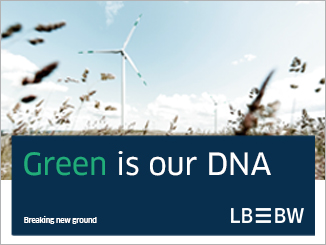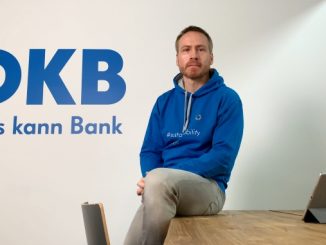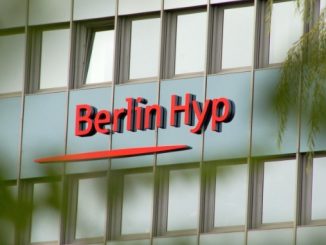North Rhine-Westphalia is the only German state to have issued sustainable bonds and is planning a seventh later this year. Axel Bendiek, head of treasury and investor relations, and Kirsten Häger, head of sustainable finance, at the ministry of finance of the State of North Rhine-Westphalia (NRW), told Sustainabonds’ Neil Day how transformation towards a more sustainable economy underpins its strategy.

You can also download a pdf of the interview here.
Neil Day, Sustainabonds: You are the only federal state that issues in sustainable format. What is it about North Rhine-Westphalia that has led to it being at the forefront of sustainable bond developments?
Axel Bendiek, NRW: Our regular annual funding programme has a size of around €15bn, with the exact amount depending on the maturity profile of our outstanding debt. This is a significant amount, and easily the largest funding programme you will find among the German states. With that in mind, we are always keen to diversify our funding toolbox and broaden our investor base. That relates to choice of maturities, where we now issue out to 100 years, as well as the format of our issuance, where the SRI concept has been a valuable addition since 2015.
The specific situation of North Rhine-Westphalia lends itself to the concept of sustainable issuance. NRW is an industrial state. It used to be considered the industrial heartland of the country and has since embarked on a successful — yet ongoing — process of structural change. In order to tackle the challenges arising from this, the state adopted a sustainability strategy to support the transformation towards a more sustainable and resilient economy, and also to make progress towards the United Nations Sustainable Development Goals (SDGs).
Against that background, the concept of sustainability bonds makes sense, not only from a financial, but also from a political standpoint. Many of the projects behind our bonds are also at the core of the state’s sustainability strategy.
We believe that the focus on sustainable development is not a fad, but is here to stay. It will become more influential for other market participants. Whether that leads to other German states starting to issue green or sustainable bonds remains to be seen, but we would of course strongly endorse any such activities.
Day, Sustainabonds: The federal government is planning to issue a green Bund. To what extent is that a welcome parallel to what you’re doing, and a potential factor in what other states might do?
Bendiek, NRW: The other states are closer peers to ourselves than the federal government, which is obviously the benchmark issuer of the Eurozone, so in a different asset class. But in order to have a full SRI market, sovereign issuance is very important, and the federal government’s decision to embark on that strategy is a very welcome addition. They have a slightly different concept, of course, with an issuance calendar for particular maturities, whereas we have a bit more flexibility in that regard, allowing us to perhaps have a more tailor-made approach. But of course it will be very interesting to see how it plays out when they start issuing.
As far as the other German states go, we have indeed been a bit surprised that nobody else followed suit. Our bonds were successful from the start, which might have convinced other states to try the same, but obviously there was no urgency or need to do so. From what we have heard and have seen, we believe that this may change over the next couple of years, especially if the sustainability concept gains more traction in political debate, and also insofar as funding needs remain at a comparatively high level due to coronavirus, today but perhaps also for the medium term.
Day, Sustainabonds: You were upgraded from “robust” to “advanced” by Vigeo Eiris in January — what were the developments that led to this?
Kirsten Häger, NRW: Sustainability is one of the guiding principles of our state. We were the first German state to implement the SDGs on a regional level with our sustainability strategy, and we regularly measure our progress on sustainability with an indicator report, and in general we are very transparent about what we do.
Day, Sustainabonds: You said late last year that NRW’s sustainability strategy is under review — can you expand on and update us on this?
Häger, NRW: The review is still ongoing. The target is to better align our state strategy with the federal strategy and the SDGs. We also want to make the indicator reports of all German states and of the Federal Republic more comparable.
Day, Sustainabonds: How is the Covid-19 crisis affecting NRW’s budget and its funding needs?
Bendiek, NRW (pictured): Our economy will of course not be spared the effects of the crisis. According to various economic forecasts, the regional economy could shrink by up to 6% in real terms, with a corresponding shortfall in tax revenue. In order to actively support the economy, and also to speed up progress towards a sustainable recovery, a large number of measures have been introduced — first of all liquidity support for small and medium-sized businesses, but also significant investments in infrastructure, such as hospitals. To cover the revenue shortfall and also to finance the additional expenditures, the state parliament already, in spring, enacted a supplementary budget that allows for up to €25bn of additional borrowing. That does not mean we will need the full €25bn, but that is technically the upper limit. Any borrowing in the context of this envelope needs to be further authorised by parliament and, as of now, three tranches with an aggregate volume of €15bn have already been approved. That comes on top of our regular €15bn programme designed to roll over existing debt, so altogether our funding programme for 2020 could be worth around €30bn — €30bn-equivalent, we should say, because occasionally we also use US dollars or other foreign currencies for issuance purposes.
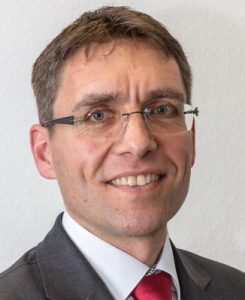 The additional needs will be temporary, of course, and strictly limited to the direct and indirect costs associated with the present crisis. But even with a balanced budget after corona, we will remain a frequent borrower due to our regular refinancing needs.
The additional needs will be temporary, of course, and strictly limited to the direct and indirect costs associated with the present crisis. But even with a balanced budget after corona, we will remain a frequent borrower due to our regular refinancing needs.
Day, Sustainabonds: Many issuers have launched Covid-19-themed bonds. Is this something NRW could do? Would it require any changes to your current framework?
Häger, NRW: We have decided not to issue any special Covid-19 bonds, but we might add Covid-19-related projects to our regular sustainability bonds, if they fit into our existing framework. So we are not going to adapt our framework to the Covid-19 pandemic.
Day, Sustainabonds: What kind of projects could they be? Axel mentioned hospitals as something being boosted in the budget.
Häger, NRW: We have of course invested a lot into health infrastructure, including an extra €2bn for university and municipal clinics. The economic stimulus package also targets investments in green projects, and that’s something that fits very nicely into our existing framework. We can add these additional projects to our bonds.
Day, Sustainabonds: The crisis seems to have made many people reconsider the importance of social infrastructure and services that they perhaps took for granted. Do you expect the Covid-19 crisis to increase investor interest in the social side of sustainable bond issuance, which has so far lagged green bonds? And/or could an emphasis on a “green recovery” see green bonds also receive a boost?
Bendiek, NRW: With regard to the social side of issuance, yes, I do believe that the crisis made clear to many market participants that robust, resilient development over a longer term cannot just be defined in economic or environmental terms — you need to look at the social dimension as well. And although long term environmental challenges such as climate change or loss of biodiversity have of course not gone away, the current crisis has certainly raised awareness for social topics. Healthcare is an obvious point, but education, a core responsibility for German states, is also a very important concern, especially during a lockdown.
The social dimension also relates to the broader concept of good governance, efficient institutions, and a capable public administration able to react swiftly and forcefully in a national crisis such as the one we now face.
Against that background, I do believe that the crisis has raised awareness and appreciation for the social side of public administration.
Regarding your second point, an emphasis on a green recovery — that could indeed be the case. As was the case in the crisis of 2009 and 2010, economic stimulus should not just be limited to boosting demand, but also be used as an opportunity to tackle long term challenges. Germany has committed itself to be carbon neutral by 2050, for example, and the SDGs remain important targets. Providing economic stimulus during a crisis while also keeping these goals in mind makes a lot of sense. In that context, I believe that a “green” recovery could really be gaining traction.
Day, Sustainabonds: Your last sustainability bond was issued in November 2019. What can you tell us about future issuance plans?
Häger, NRW: We want to continue our sustainability bond programme with typically one transaction per year — last year was an exception as we issued a second, in November. Normally we issue our sustainability bond in spring, but this year we had to postpone it towards a later point of time in the year due to the peak of the Covid-19 pandemic.
Day, Sustainabonds: How, if at all, are you adapting your framework in light of the EU Taxonomy and Green Bond Standard?
Häger, NRW: We are following the developments at the EU level closely, and we believe these regulations are important and necessary. However, they don’t fit exactly because ours are sustainability bonds and not green bonds. We hope that the EU will soon also decide on a taxonomy for social and sustainability bonds.
Day, Sustainabonds: Have you made any other changes to your framework and/or issuance strategy lately?
Häger, NRW (pictured): In the past, we refinanced expenditures for voluntary green and social projects of the previous budget year. Since last year, we have financed projects of the current budget year. This is also why we had two sustainability bond transactions last year: the one in spring was to refinance projects of the previous year, 2018, and the one in November was to finance projects of budget year 2019.
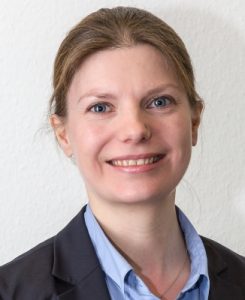 Something else we have recently changed is that we have expanded the SDG referencing of our sustainability bonds. Also, we have increased the number of projects in our bonds since our first issuance, and we now cover a wider range of topics — broadband expansion, for example — but without diluting our strict framework.
Something else we have recently changed is that we have expanded the SDG referencing of our sustainability bonds. Also, we have increased the number of projects in our bonds since our first issuance, and we now cover a wider range of topics — broadband expansion, for example — but without diluting our strict framework.
One other recent development is that the Wuppertal Institute, which provides our impact report, has extended their impact reporting considerably. Initially, they only reported on the green impact indicators, but now they are also reporting on social indicators. Over the years they have developed their methodology further and expanded the scope of their reports.
Day, Sustainabonds: What was behind the change from financing the previous year’s projects to the current year’s?
Bendiek, NRW: A key reason for changing was that under the prior approach we always had a very tight issuance schedule. We needed to have the near-final figures from the last year, then get all the documents in order, including second party opinion and impact report, allow for a roadshow of a week or two, and then issue before the time came when the budget had to close. That was a very, very tight schedule, so we wanted to have a bit more flexibility in that regard.
Now we only look at the current budget year, but it’s still the concept of one issuance for one budget year — we would rather not bring together projects from various years.
Day, Sustainabonds: You touched on this a little at the beginning when you were talking about the thinking behind your strategy, but could you give some more colour on how sustainable issuance has affected your investor distribution and/or funding levels?
Bendiek, NRW: If we look at the order books of any one of our six sustainability bonds — one of which came in two tranches — we see a larger number of investors than usual, including new names who had not bought our regular products before, as well as larger order sizes from investors we already knew. All of these transactions were significantly oversubscribed, which typically allowed for significant tightening of issuance spreads. In my opinion, that is due to the fact that with the use of proceeds concept, our sustainability bonds do not take anything away from a regular euro benchmark offering in our name, but they do offer additional commitments in terms of use of proceeds, documentation, and reporting. Depending on the investor’s focus, these bonds can be viewed in purely financial terms — such as tenor, spread and liquidity — or with an eye on the additional SRI features. Taken together, that makes for a very broad investor base, which in turn drives down spreads due to enhanced demand. If I were to put a number on that, I would say that the financial advantage in terms of tighter spreads can be worth around 1bp-2bp, everything else being equal. For large issuance sizes and/or long tenors — up to 20 years in the past — that creates a significant financial advantage for the issuer, namely lower interest payments. What’s also worth noting is that our sustainability bonds are never being tapped, unlike our regular euro benchmark deals. Since many investors hold on to them until maturity, we believe there is less chance of building significant positions through secondary market trades, which in turn means that investors need to participate in the primary market if they have serious demand for these products.
Day, Sustainabonds: As you mentioned, you have issued as far out as 100 years — what is the strategy behind your ultra-long issuance, and how might that relate to sustainability?
Bendiek, NRW: For a number of years now, a strategy of issuing with longer tenors has been at the core of our debt management. The reason is very simple: in the current yield environment, which we consider to be exceptionally low, we strive to extend the duration of our outstanding debt to reduce interest rate risk and enhance certainty for the state’s budget in the years ahead. In the course of this long term strategy — which started with tenors of 20 and 30 years and now extends up to 100 years — we have found that these very long tenors also met very significant investor demand, larger than expected, which allowed for a number of benchmark-sized issuances, which we strive to bring to a final size of €3bn, which is always the target size for our liquid euro benchmark lines. In the process, the weighted average maturity of our outstanding debt has increased to almost 14 years, and our annual refinancing needs have come down accordingly — which was welcome, because in times of extraordinary needs, such as in the current corona-pandemic, we can finance such additional needs with shorter tenors of up to 10 years without distorting our maturity profile.
The long term issuance strategy as such is not directly linked to the concept of sustainability, but we believe that the very nature of a sustainable approach is to take a long term perspective, and in that sense, it fits well.
Day, Sustainabonds: Beyond what we have already discussed, are there any other developments in your strategy or market developments that you consider particularly important?
Bendiek, NRW: As a general observation, I would say that with many market participants having now become accustomed to the view that low rates are here to stay, the focus is more and more on additional features besides simply the yield — that can be liquidity, that can be SRI features, of course, and it can be a clear issuance strategy. All these things have become more important. That’s why we have been trying to enhance the transparency around our funding programme, why we have embarked on the SRI strategy as discussed, and also why we have made great efforts to enhance the liquidity of our outstanding bonds, with an official €3bn target size — and we have made every effort to communicate very clearly along those lines. While we cannot, of course, shape the market in terms of the level of rates — that is a given for all of us — we want to do everything we can in respect of those features we can affect.
Sustainabonds conducts all research and writing independently to maintain the full editorial integrity of the publication.
As a supporter of Sustainabonds, LBBW is facilitating a series of interviews with leading players in ESG and the green, social and sustainability bond markets.
Main photo: NRW 74th birthday event, 23 August; credit: Land NRW/Andreas Buck

